
Berfu Ulusoy
Berfu is an Employee Experience Specialist at Zavvy. She has a background in learning psychology and helps our customers get the most out of their people enablement programs.

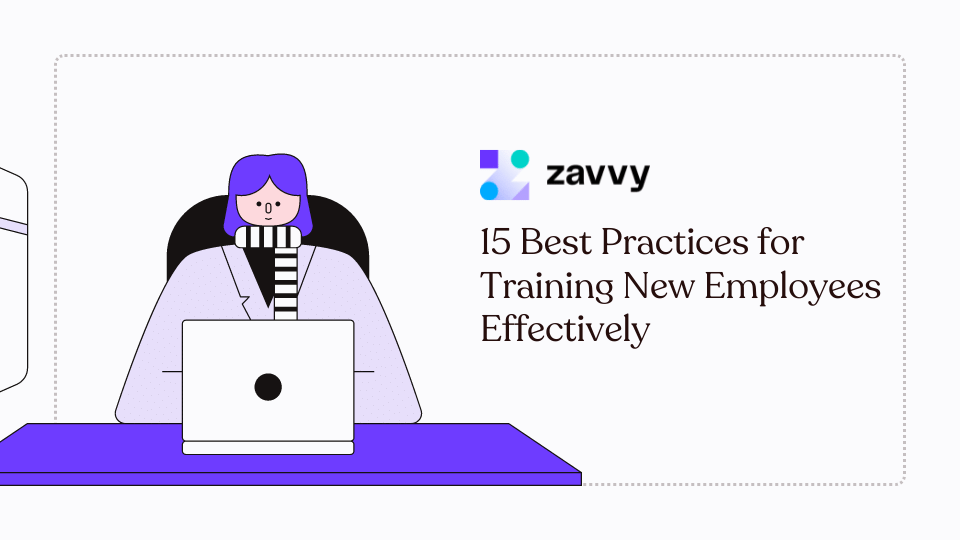
Every dollar spent on learning and development generates an average of $4.70 growth in business revenue per employee.
Impressive, right?
Employee training is a valuable investment that directly impacts a company's bottom line.
And we can't stress enough the importance of applying the best practices for training new employees from the get-go.
Effective employee training plans improve the time it takes for new employees to impact your business positively.
Besides, employee onboarding statistics show that new employees are twice as likely to look for new jobs if they experience a negative onboarding experience. And about 10% resign as a result of an inadequate onboarding experience.
Applying the best practices for training new employees can lead to a better new employee experience.
As a result, you'll have more satisfied employees and better retention rates.
Together with our curators, we have created a library of actionable digital marketing resources. Personalized to your team's needs.
.png)
According to a survey by Deloitte, 38% of talent professionals feel their firm's workforce does not align with the business's sense of purpose.
It means companies might not equip employees with the right KSAOs:
As we said, training is an investment.
You want to ensure your organization invests resources towards a future where you meet the business mission, vision, and strategic goals.
A well-aligned training will prepare your new employees for the high-performance standards that'll lead your business towards its goals.
Tip #1: A first step to achieving this alignment is identifying the gap in your current training program.
Is the training program impacting the right KSAOs?
How are the employees you've trained in the past performing against your business's goals?
Tip #2: If you don't like the answers to these questions, you need to adjust your training goals to fill the gap.
Assessing the new employees' current skill level lets you provide personalized training. You can tailor the training to fit each employee's strengths and weaknesses.
Each employee gets the specific skills they need to achieve your business's goals.
How can you achieve this? Easy.
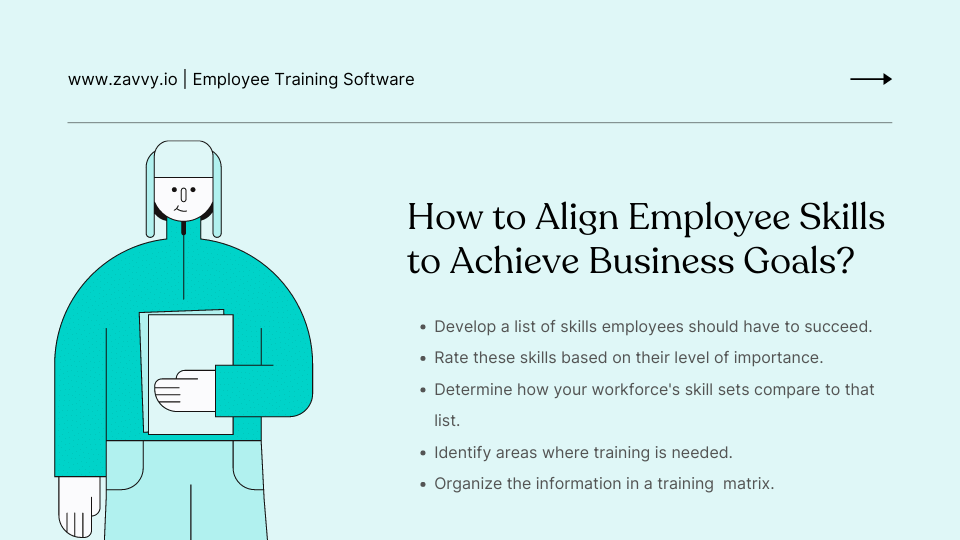
Organize the data collected in a training matrix.
Tip: A training matrix helps you analyze each employee's skills more effectively and streamline the training with their skills gap.
Carry out a training needs assessment.
Define what the employees need to know and what they should be able to do by the end of the training.
Training needs assessments help you focus your training and gives it direction.
Tip #1: Ensure that your training resources precisely target your employees' needs and subsequently meet your organization's goals.
Tip #2: Matching the training to your business's needs also prevents employees from getting frustrated and overwhelmed with unnecessary and excessive training.
Perhaps you know what the learning objectives are. But what about your trainees?
Communicate the desired learning outcomes of the training.
Communicating the learning objectives helps employees understand your expectations of them.
It also creates a performance-based culture where employees learn to set goals based on your business's principles and objectives.
Wondering how to communicate your learning objectives effectively?
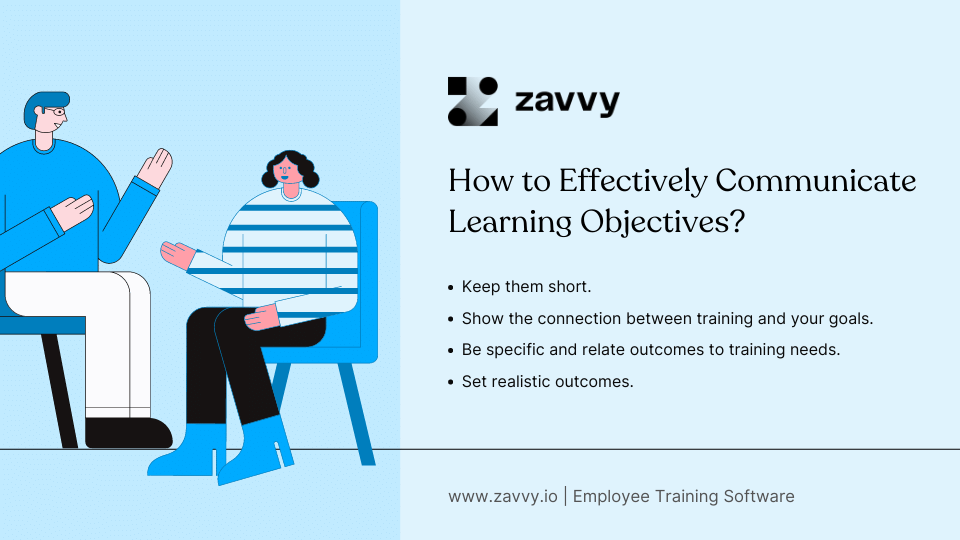
Tip #1: Keep them short. You don't have to get into details about the learning materials.
Tip #2: Show the connection between the training objectives and your business goals.
Tip #3: Be specific and relate each outcome to a training need.
Tip #4: Set realistic outcomes.
You've probably noticed from other training programs that people learn differently.
Catering to the different learning styles of your employees is crucial to picking the right training methods that match their strengths.
It helps them achieve their learning objectives and keeps them motivated.
Your employees can fall under one or more of the following categories:
Tip: Work on creating learning material that blends all four learning styles.
A learning path outlines the sequence the employees will follow to master required skills and understand concepts.
It moves your training program from confusing to effective and targeted.
Making it customizable means it can cater to each employee's individual preferences and learning needs.
Set the proper structure for employee's learning path using these tips:
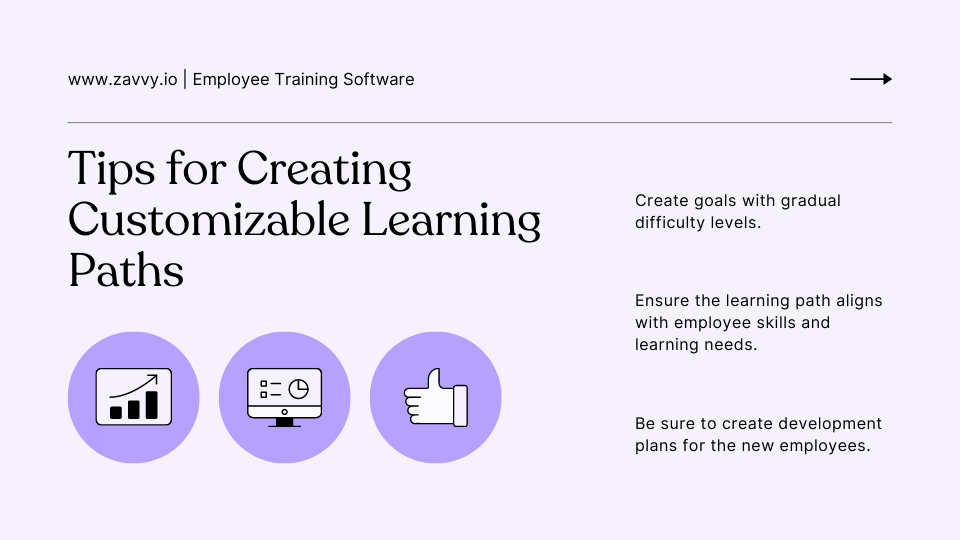
There is no one-size-fits-all training method.
Picking a training method that fits your business will determine your success in achieving your training objectives.
Choose a training method based on the following criteria:
Excitement and motivation to learn will be high at first. But it soon wears off, and attention levels begin to drop.
Adding interactive and visual elements immerses the employees in their training activities. It creates a highly effective learning experience and boosts knowledge retention.
Tip: Using gamification in training is one effective way to boost the learning process.
Add gamification elements throughout the training, such as challenges, feedback, goal-oriented challenges, progress bars, points, and leaderboards.
Use scenarios to recreate real-life decision-sensitive situations that engage the employee intellectually.
Relying solely on traditional (formal) methods of training new employees is setting up your training program for failure.
You have to agree.
Traditional learning methods can be slow, non-engaging, and lacking in operational efficiency.
Cue digital training tools aiming to transform your training initiatives by boosting innovation and creativity.
They make learning fun and maximize the employees' attention and knowledge retention.
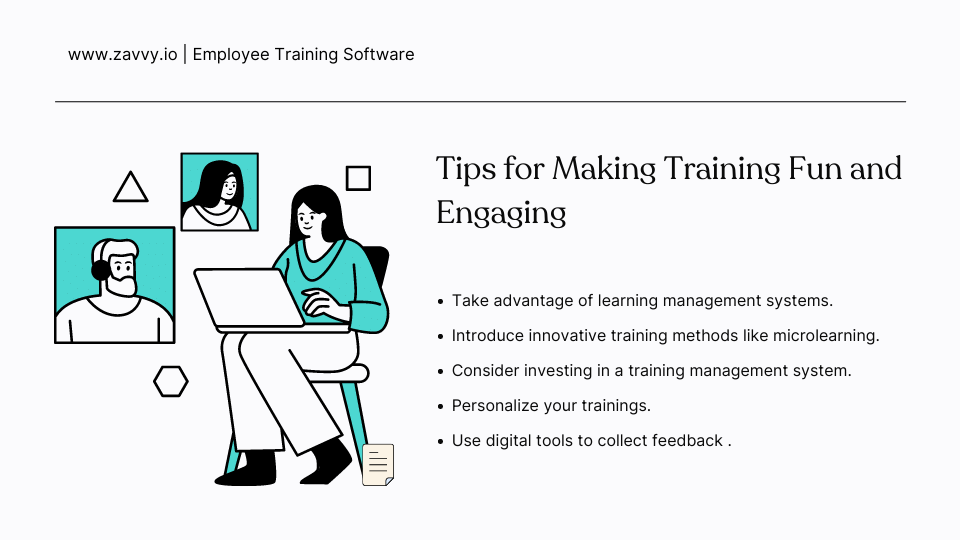
Tip #1: Take advantage of learning management systems. Some come with a ready-to-use course catalog.
➡️ Check out our ready-to-use training journey templates. They come with features such as quizzes, rich content, Slack, MS Teams, email integrations, and automated notifications.

Tip #2: Don't skip innovative training methods like microlearning. Reduce cognitive overload and boost memorability.
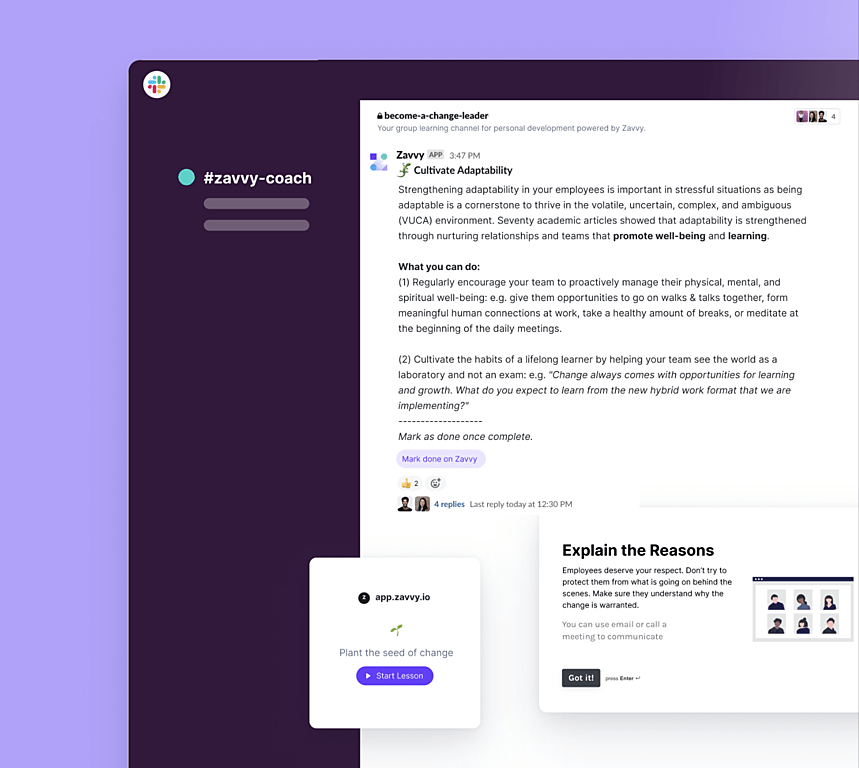
Tip #3: If you want to take ownership of your learning content, consider investing in a training management system. Create your own courses and customize push notifications. Some tools offer advanced features such as social learning and modern training formats.
Tip #4: The best learning software solutions enable you to personalize training without increasing the manual workload.
Tip #5: Use digital tools to collect feedback and drive continuous development.
➡️ Discover how a sales training software solution can enable your workforce and improve performance.
Evaluating training effectiveness shows you how valuable your training offering is and reveals areas you can improve.
It helps create effective training that promotes better employee performance, increases satisfaction, and boosts retention.
Tip: You can measure training effectiveness by collecting qualitative and quantitative data about your training program.
Consider metrics such as:
Blending multiple delivery modes for training new employees helps you cater to your new employees' preferred learning styles.
Blended training also ensures that employees with scheduling conflicts still get the training they need.
Tip #1: Stay current and relevant even as you mix different delivery modes.
Tip #2: Embrace innovative technologies and learning trends that cater to the needs of the modern employee.
Here is an example:
Instructor-Led Training (ILT) is one of the most traditional methods of training. But it's still a massively effective method.
Peer learning helps employees fill knowledge gaps by learning from their peers. It also:
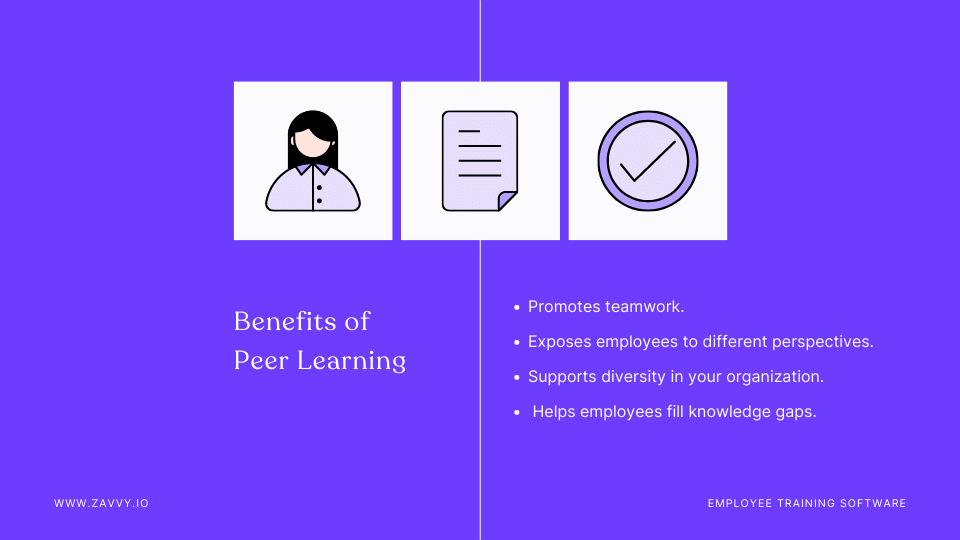
➡️ Discover how Freeletics is building the next generation of leaders with Zavvy. They mix distinct programs that tie with each other: microlearning, People Manager Roundtables, and Leadership Onboarding.
According to Hermann Ebbinghaus, people forget about half of the information learned within the first hour and about 70% within 24 hours.
Spaced repetition helps resolve this problem.
It fosters better learning outcomes.
Spaced repetition involves providing a refresher on the skills and knowledge learned regularly until the knowledge is firmly implanted in the employees' long-term memory.
An added advantage is that the knowledge will be easier to digest as the employee gets familiar with the work environment and their roles.
Tip: Combine spaced repetition with personalized quizzes to test their retained information and enhance recall.
Assessment tests are as necessary as training materials.
They help you know if the employee is learning what they're supposed to know about their roles and working in your organization. And if you're meeting your training objectives.
Have one or more assessment items for each learning objective.
Tip #1: You can choose between a knowledge-based or a task-based test that matches each learning objective. Or you can mix and match.
Tip #2: If the assessment results are below expectations, adjust your training methods as needed.
Employee engagement is among the top 3 challenges for learning and development professionals worldwide.
Employees engage with the training content at three levels:
Tip #1: It's vital to achieve all three levels of engagement with your training to succeed.
Besides, when new employees are engaged in their training, they will likely be more productive, efficient, and innovative in their roles.
Tip #2: You can add fun elements like leaderboards and contests that encourage friendly competition. Find ways to integrate collaboration into your training.
It's hard to evaluate your employees' attitudes about your training without asking them.
Tip #1: Track learner feedback to get what's working and not. You'll get insights into how you can improve their learning experience and administer better training.
But the feedback will not help you if it's not honest.
Tip #2: So, create a space where the employees can share their experiences without fear.
Make it possible to provide comments and relevance scores on the training courses.
Tip #3: A tool like 360 Feedback Software helps you establish a company-wide feedback system that drives performance and development.
You get to develop a feedback culture and an open growth mindset that keeps your business on a growth trajectory.
"When entire companies embrace a growth mindset, their employees report feeling far more empowered and committed; they also receive far greater organizational support for collaboration and innovation." Carol S. Dweck's, expert in developmental psychology.
These best practices for training new employees will only impact your business if you integrate them into your programs.
Here's a quick recap.
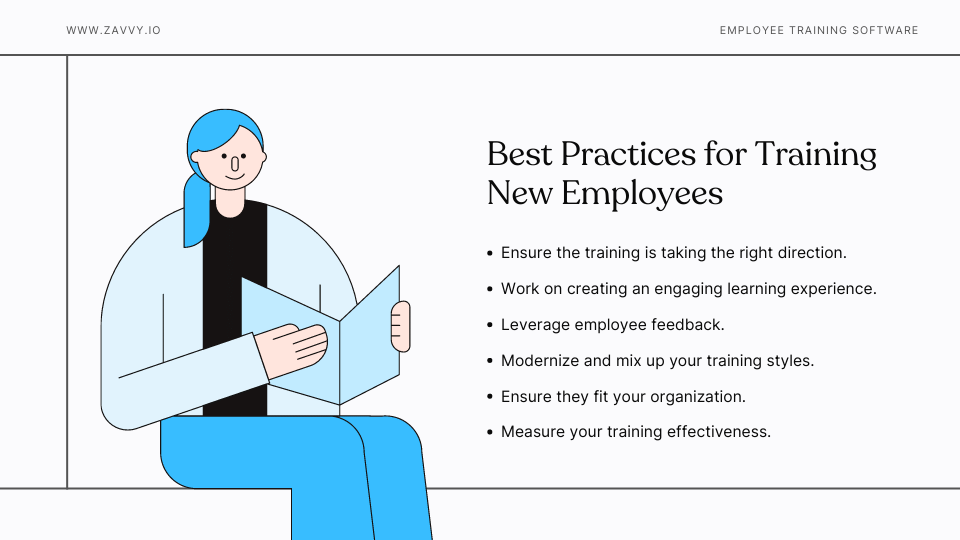
Don't treat new employee training as an afterthought.
Run your employee training without having to worry about manual assignments, constant reminders, outdated formats, or progress tracking.
Discover how Zavvy can help in a free 30 minutes demo with our learning specialists.
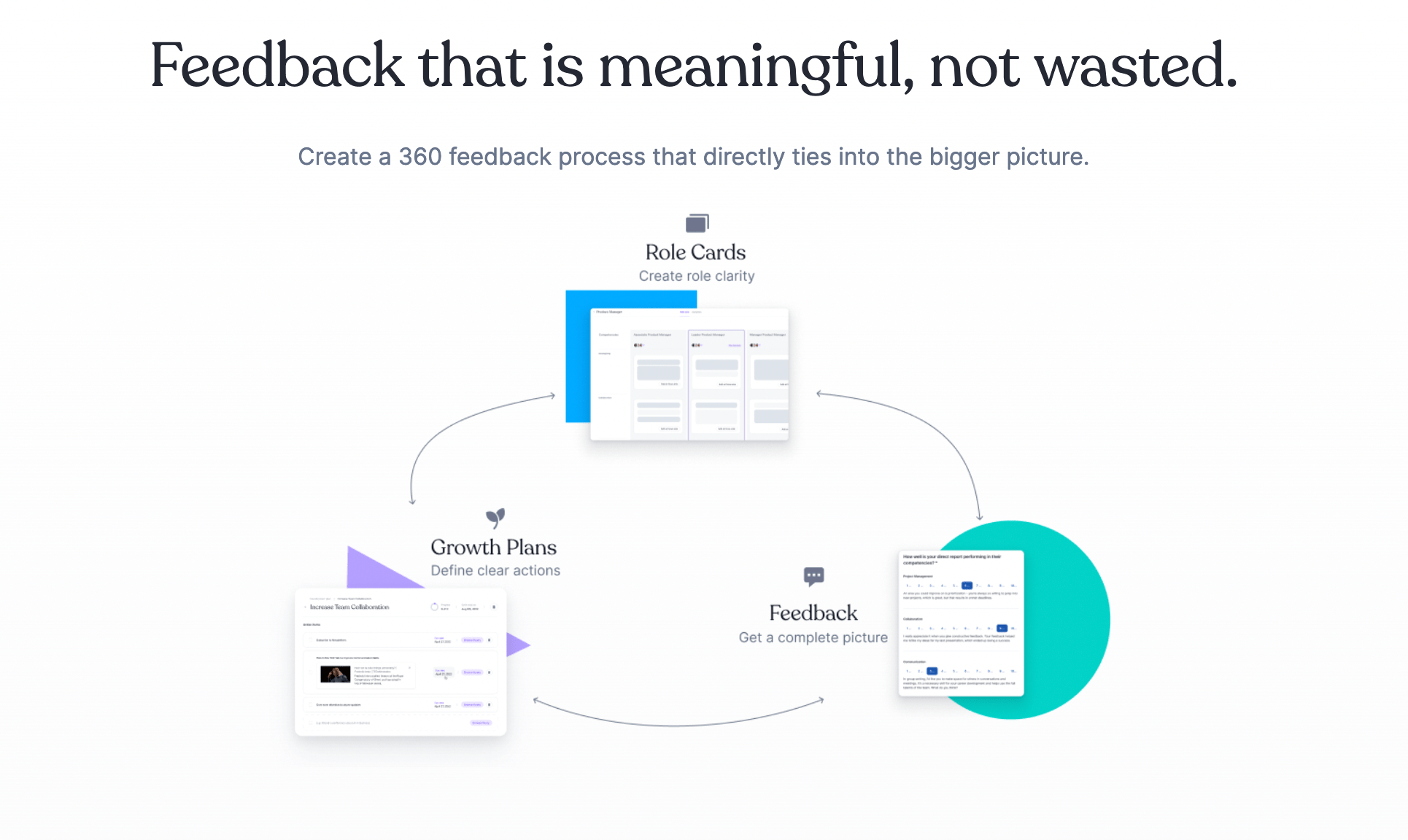
Upskill your team every week with the best contents and personalized recommendations.

Every dollar spent on learning and development generates an average of $4.70 growth in business revenue per employee.
Impressive, right?
Employee training is a valuable investment that directly impacts a company's bottom line.
And we can't stress enough the importance of applying the best practices for training new employees from the get-go.
Effective employee training plans improve the time it takes for new employees to impact your business positively.
Besides, employee onboarding statistics show that new employees are twice as likely to look for new jobs if they experience a negative onboarding experience. And about 10% resign as a result of an inadequate onboarding experience.
Applying the best practices for training new employees can lead to a better new employee experience.
As a result, you'll have more satisfied employees and better retention rates.
Get a demo!
We'll be happy to show you around and answer all your questions.
Trusted by innovative companies



We'll be happy to show you around, answer your questions, or arrange a free trial.
Erhalten Sie eine kostenlose Demo unserer Onboarding-Software.
Vertraut von



Your Training & Development Strategy - Solved in 1 Tool.
Trusted by innovative companies



We'll be happy to show you around, answer your questions, or arrange a free trial.
Learn how Zavvy helps you drive performance, development, and engagement.
Trusted by innovative companies



We'll be happy to show you around, answer your questions, or arrange a free trial.
We'll be happy to show you around and answer all your questions.
Trusted by innovative companies



We'll be happy to show you around, answer your questions, or arrange a free trial.
Gerne zeigen wir Ihnen ganz unverbindlich unsere Plattform im Detail.
Vertraut von modernen Unternehmen



Get a demo!
We'll be happy to show you around and answer all your questions.
Trusted by innovative companies



We'll be happy to show you around, answer your questions, or arrange a free trial.
Erhalten Sie eine kostenlose Demo unserer Software für Mitarbeiterenwicklung und Training.
Moderne Unternehmen
setzen auf Zavvy


